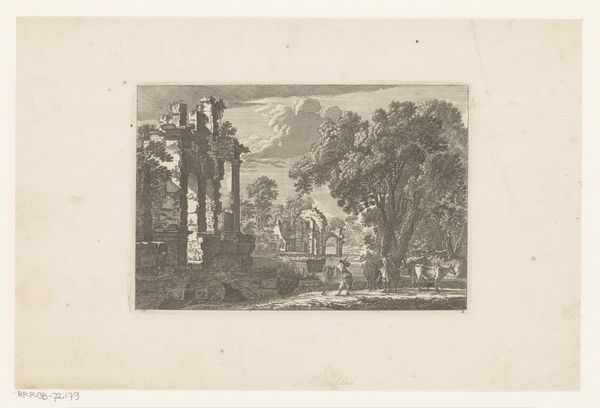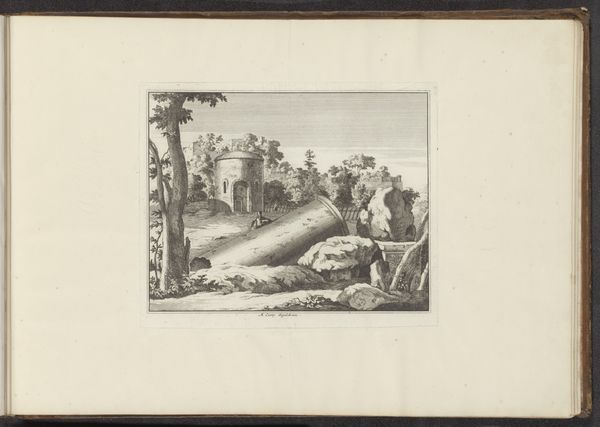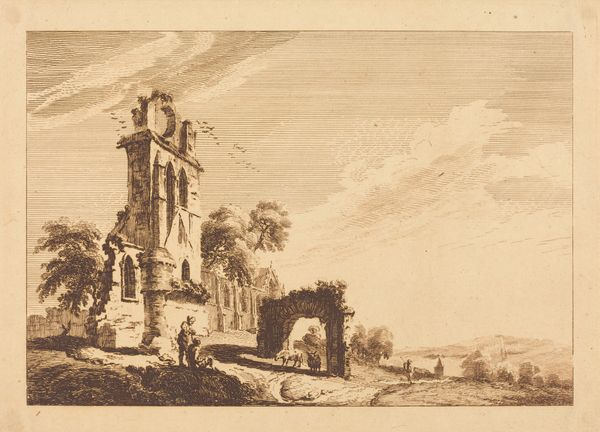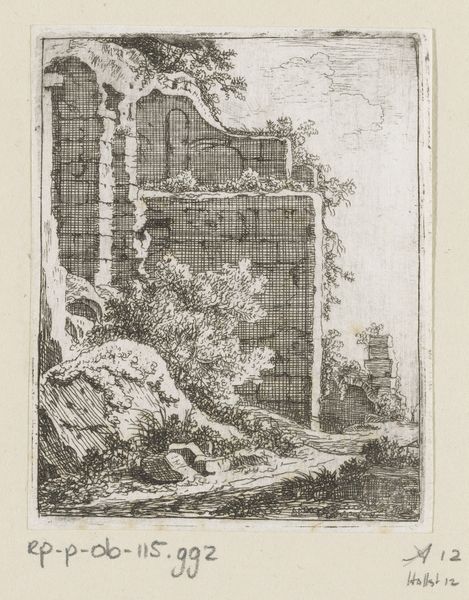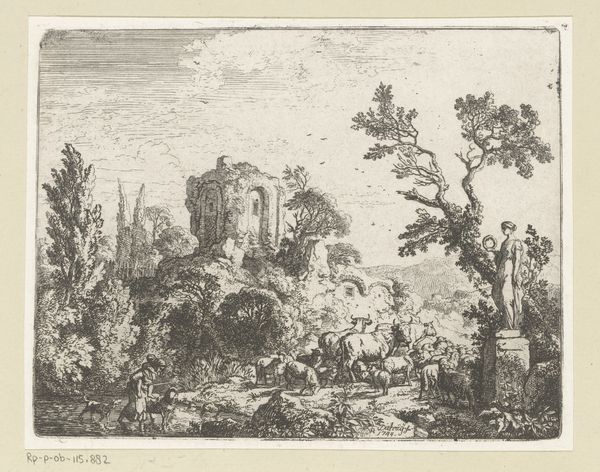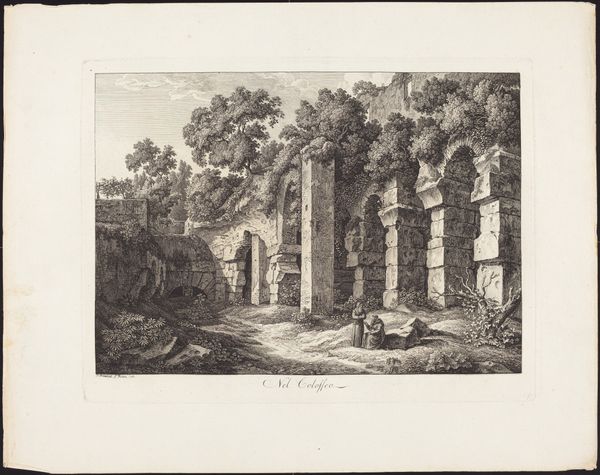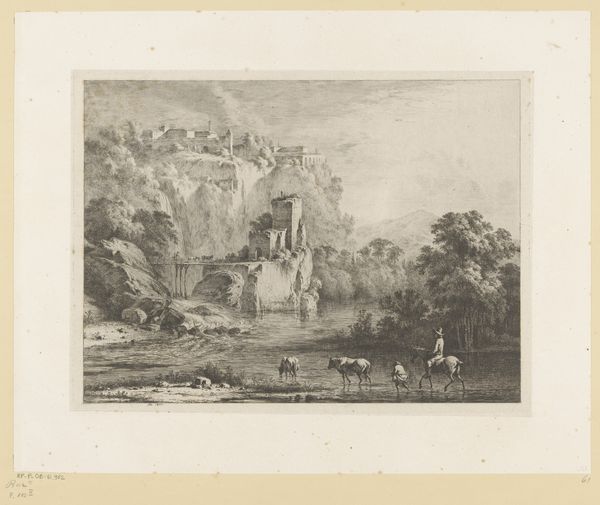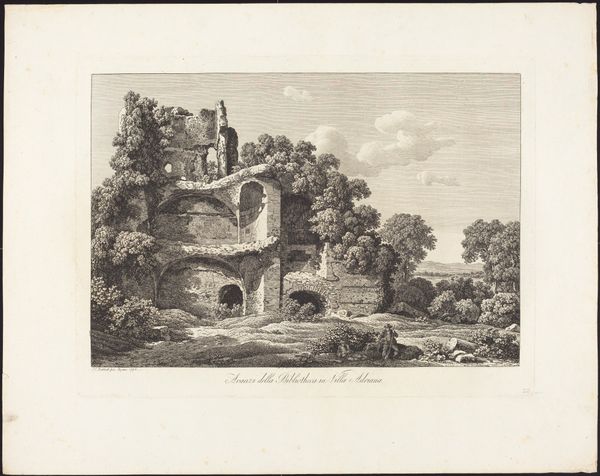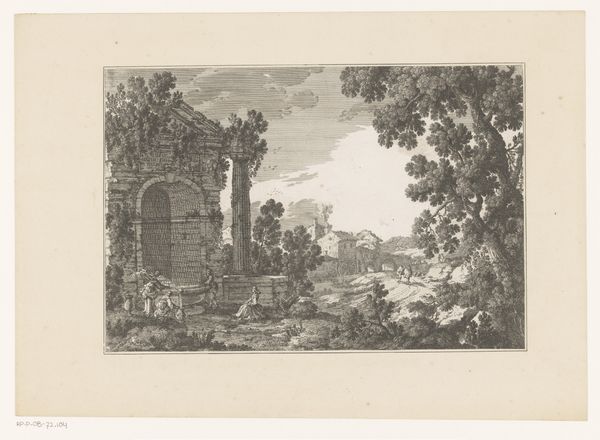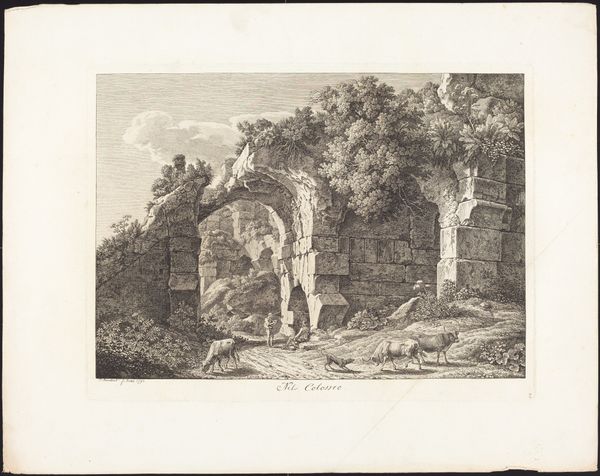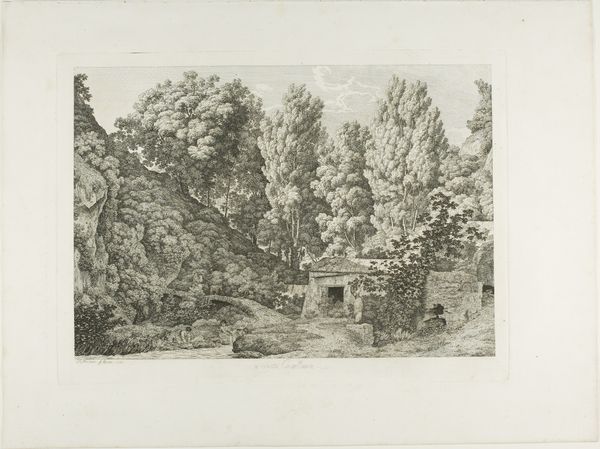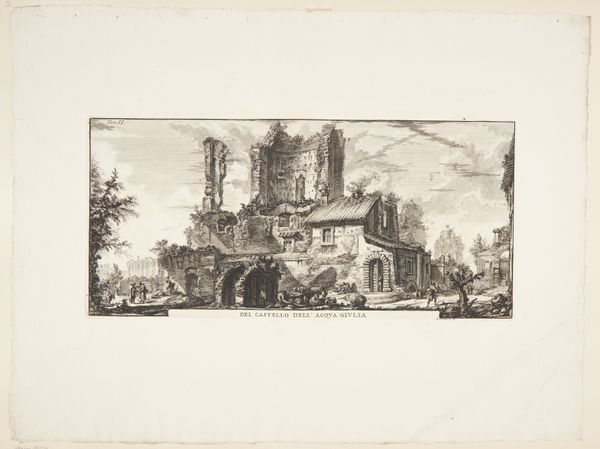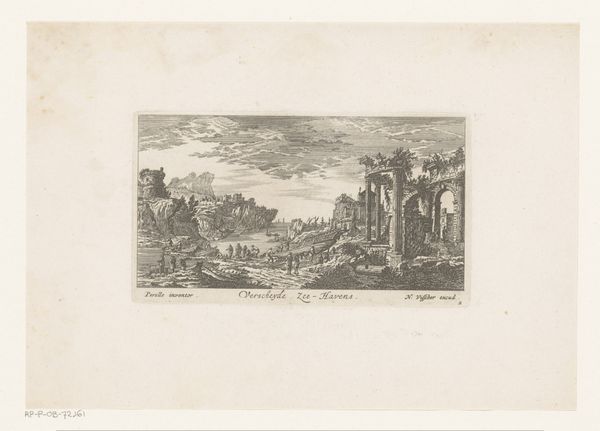
Sepolcro volgarmente detto degli Orazii e Curiazii a Albano 1795
0:00
0:00
print, etching, engraving
#
neoclacissism
# print
#
etching
#
landscape
#
engraving
Dimensions: plate: 28.1 x 38 cm (11 1/16 x 14 15/16 in.) sheet: 39.1 x 49.1 cm (15 3/8 x 19 5/16 in.)
Copyright: National Gallery of Art: CC0 1.0
Curator: This is Johann Christian Reinhart's "Sepolcro volgarmente detto degli Orazii e Curiazii a Albano," made in 1795. Reinhart employs etching and engraving to depict this supposed tomb near Albano. Editor: My first impression is how intensely detailed it is. It evokes a very specific, almost dreamlike, landscape, even though it's monochrome. The texture achieved is amazing! Curator: Reinhart, as a neoclassical artist, engages with the picturesque ideal, framing this ruin as both a historical artifact and an aesthetic object. The “tomb,” though likely misidentified, links the Roman past with contemporary narratives of national identity and virtue. Who had the authority to speak to that narrative, I wonder? Editor: Indeed, look at the means through which this image would have circulated – etching and engraving are reproductive techniques. The materiality of this print points to broader social implications – it was made for distribution, for consumption, thus democratizing access to these visions of Roman glory and Reinhart's perspective of Neoclassical aesthetics and historical context. Curator: And let's not ignore the composition. Note how Reinhart places figures within the landscape, almost dwarfed by the scale of both nature and historical ruin. There is a palpable tension there, isn’t there, between humanity’s ambitions and the enduring power of the natural and historical worlds? Think of the complex layering that constitutes history; Reinhart shows us that the world itself carries the material residue of bygone peoples. Editor: Precisely! By carefully crafting these images through a mechanical and chemical process, Reinhart transforms the very labor of art making into a social act. Every line etched, every impression made contributes to constructing a shared understanding. In that vein, do you feel that the materiality of the print challenges, or reinforces, traditional notions of art as some exceptional creation from an elevated "genius?" Curator: That's an astute question. While the reproductive nature potentially democratizes the image, its artistic and historical subject reinforces a canon built upon power structures and idealized Western traditions. However, in understanding this piece's relationship with material culture and social identity we may interrogate that canon, and therefore expose some truths about how narratives, especially historical ones, come to have legitimacy and force. Editor: Absolutely. It's in this interplay between process, material, and content where the true value lies, even for contemporary viewers.
Comments
No comments
Be the first to comment and join the conversation on the ultimate creative platform.
